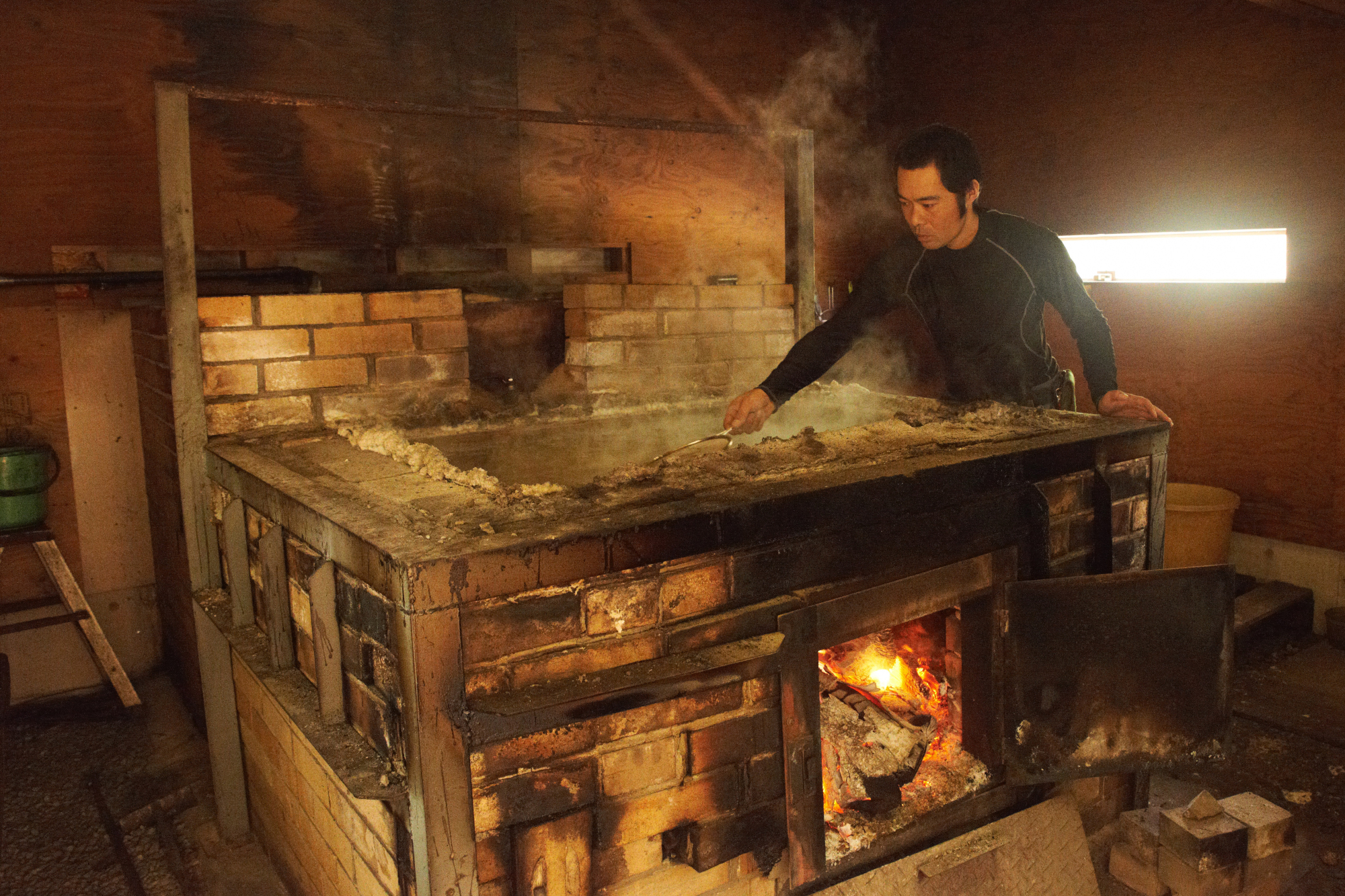Since Japan is an archipelago, it would seem logical that there would be hundreds, if not thousands, of artisanal salt makers along its almost 30,000 kilometers of coastline.
However, a government-mandated salt monopoly shut down the making of salt from 1905 to 1997. The government decreed salt making to be its sole domain, partly to develop the domestic salt industry and partly to fund the Russo-Japanese War of 1904-05. So-called table salt (produced via a proprietary method of ion-exchange membrane electrodialysis) was the only salt available in Japan for most of the 20th century.
Fortunately, today there are many salt makers, both large and small, artisanal and not, as well as tourist destinations where you can experience the salt-making process yourself, such as at the Moshio Association in Hiroshima Prefecture. Moshioyaki, an ancient method dating back to the first half of the Kofun Period (220-552), is thought to be one of the oldest salt-making techniques in Japan.


















With your current subscription plan you can comment on stories. However, before writing your first comment, please create a display name in the Profile section of your subscriber account page.